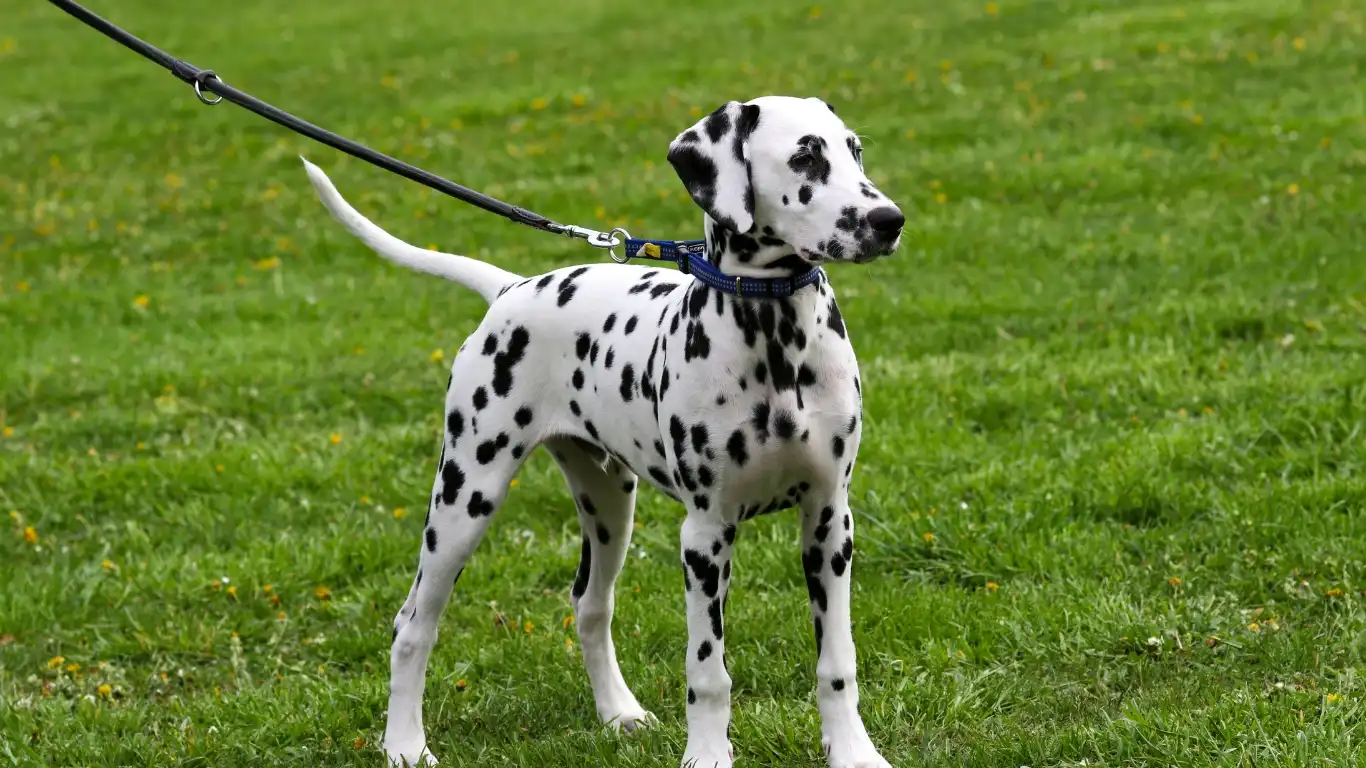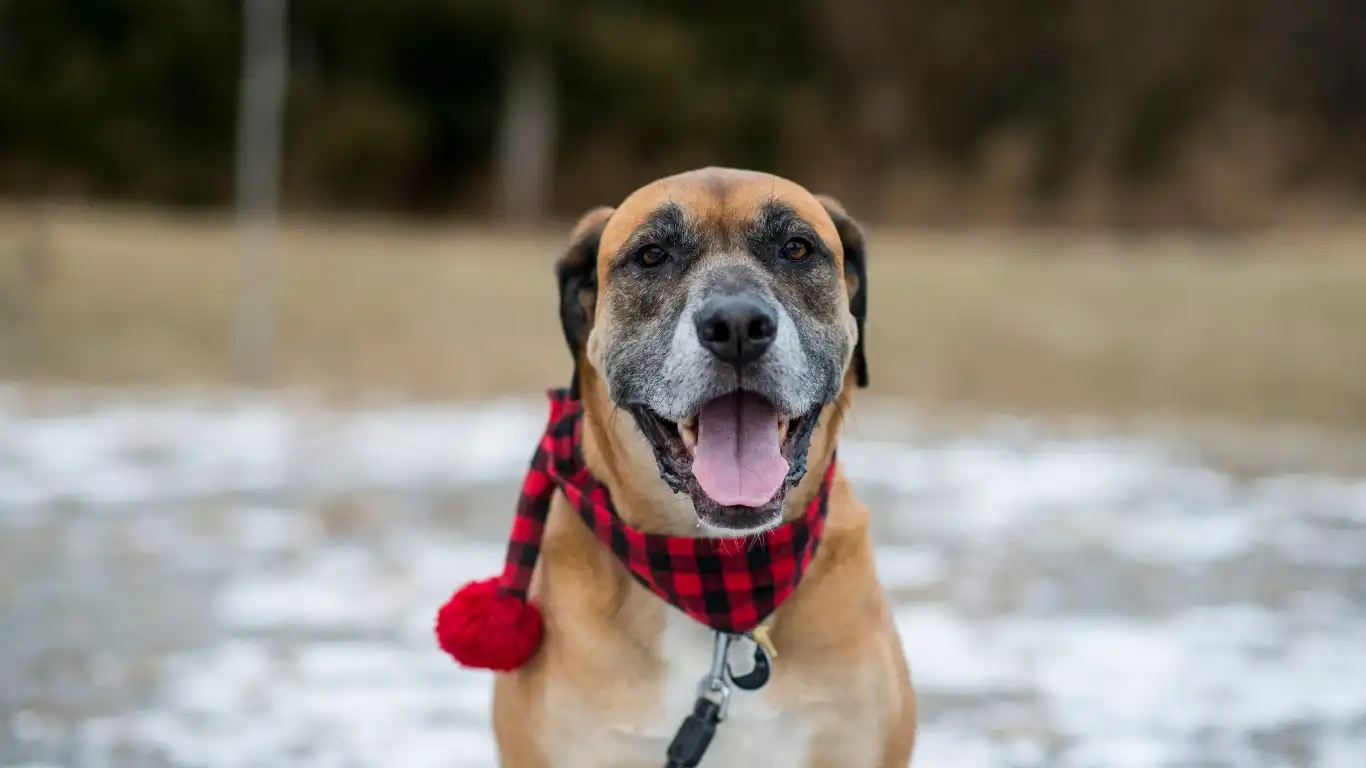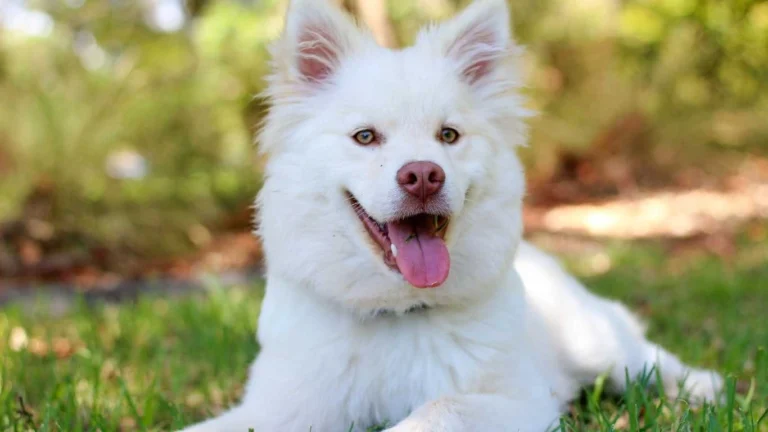Keep Your Dog Happy and Healthy During Seasonal Changes
Let’s talk about something that sneaks up on us—and our dogs—every few months: the changing seasons. Knowing how to care for your dog during seasonal changes isn’t just about throwing on a cute sweater when it gets chilly or offering extra water when it’s hot. As a Veterinary Technician who’s spent years specializing in nutrition, I’ve seen firsthand how shifts in temperature, humidity, allergens, and even daylight hours can affect your pup’s physical health, appetite, energy levels, and overall mood. It’s not just weather—it’s biology, behavior, and well-being all bundled together in a furry package.
Understanding Your Dog’s Seasonal Sensitivities

Dogs Feel the Seasons Too
You might be surprised at how much the season affects your dog. Just like us, they can experience dry skin in winter, allergies in spring, heat exhaustion in summer, and joint discomfort in the fall when temperatures drop. I’ve had pet parents come into the clinic convinced their dog was sick, only to find out it was just seasonal shedding or a slight dip in appetite due to heat.
Think of it like this: your dog lives close to the ground, wears a fur coat year-round, and doesn’t have the luxury of complaining when the weather shifts. Their discomfort shows up in more subtle ways—scratching more, drinking less, slowing down on walks. Paying attention to these cues can help you catch seasonal issues before they become full-blown problems.
Breed and Coat Matter
Not all dogs are affected equally by seasonal changes. Thick-coated breeds like Huskies and Malamutes thrive in the cold but may overheat quickly during warmer months. Meanwhile, short-haired dogs like Greyhounds or Frenchies may need extra warmth when the mercury drops.
- Double-coated breeds shed more during the spring and fall. Regular brushing can help control hair buildup and keep their skin healthy.
- Short-haired or thin-coated dogs might benefit from doggy sweaters or jackets in winter. Yes, it’s adorable—but it’s also practical.
- Flat-faced breeds (brachycephalic) like Pugs and Bulldogs can struggle with breathing in high heat and humidity.
Over the years, I’ve learned to recommend a tailored seasonal care plan for each pup based on their breed, age, and health conditions. Trust me—your Schnauzer and your Lab won’t handle a humid July day the same way.
Seasonal Nutrition Adjustments

Feeding with the Forecast in Mind
Seasonal changes often mean we need to reassess our dog’s diet. When I consult pet parents, I usually ask: “Has your dog’s appetite changed recently?” Because if it has, it might not be pickiness—it could be weather-related. Hot weather? Dogs tend to eat less. Cold weather? They might need a bit more fuel to stay warm and energized.
- In colder months, dogs often benefit from slightly higher calorie intake, especially active or outdoor pups. I like recommending gently warmed, protein-rich meals to support energy and immune health.
- In warmer months, hydration becomes key. Incorporate moisture-rich foods like raw or gently cooked veggies and fruits like blueberries or watermelon (in moderation, of course).
- During allergy seasons, consider anti-inflammatory additions like omega-3 fatty acids from fish oil. These help reduce itching and skin flare-ups.
One of my clients had a Labrador with chronic springtime itching. Once we adjusted his spring diet with skin-supportive nutrients and cut down on inflammatory carbs, the improvement was night and day. The right food can make all the difference.
Supplements to Consider
I’m a big fan of seasonal supplements—when used appropriately. For example:
- Joint support: In colder months, glucosamine and chondroitin can help older dogs stay limber.
- Probiotics: Seasonal stress and diet changes can upset gut balance, so a daily probiotic can help keep digestion on track.
- Allergy support: Quercetin (a natural antihistamine) or vet-approved herbal blends can ease mild seasonal allergies.
Always check with your vet or nutrition-focused tech (like me!) before adding anything new. Supplements can be a great tool, but they need to fit your dog’s specific needs and medical history.
Creating a Comfortable Environment at Home

Adjusting Their Living Space
Whether it’s blazing hot or bone-chillingly cold, your dog’s comfort inside the house matters. I always tell pet parents: if you’re hot or cold, chances are, your dog is too. Make adjustments based on seasonal needs:
- Winter: Add a soft, insulated bed in a draft-free area. Avoid placing beds directly on tile or hardwood floors.
- Summer: Keep water bowls fresh and full. Cooling mats and fans help, especially for older dogs or thick-coated breeds.
- Spring/Fall: Clean frequently to manage shedding and allergens. Dust, pollen, and fur love to hide in corners and bedding.
Once, I had a senior Dachshund patient whose arthritis would flare up with the first cold snap. After suggesting heated bedding and some home setup tweaks, his owner reported he was bouncing around like it was summer again.
Exercise and Outdoor Time Through the Seasons

Keeping Walks Safe and Fun—Year Round
Here’s a little behind-the-scenes from the clinic: I can’t tell you how many dogs we’ve seen with cracked paw pads in winter or heatstroke in summer—simply from routine walks. So when we talk about how to care for your dog during seasonal changes, exercise is a huge part of that conversation. Daily movement is essential, but it needs to be adjusted for the season.
In the winter, I always suggest shorter but more frequent walks, especially for dogs with arthritis or smaller breeds who get cold fast. Paw balm or booties help protect from salt and icy sidewalks (though, fair warning—booties are a battle at first!). Summer, on the other hand, calls for early morning or evening strolls to avoid the blazing pavement. A good rule of thumb? If the ground is too hot for your bare feet, it’s too hot for theirs.
- Winter: Layer up with coats for small or short-haired breeds. Check paws after walks for ice or salt buildup.
- Summer: Walk during cooler hours. Carry a portable water bowl. Avoid heavy play in direct sun.
- Spring/Fall: Perfect seasons to mix in hikes, beach days, or agility play. Just keep an eye out for ticks and seasonal allergens.
I once had a client whose Border Collie got mild frostbite just from a longer-than-usual winter trail run. Since then, she checks the temperature and terrain like a pro. Honestly, it’s little things like that—planning and paying attention—that make a big difference.
Behavioral Shifts You Shouldn’t Ignore

Yes, Weather Can Affect Mood
One thing I’ve noticed, especially with more anxious or senior dogs, is how much seasonal shifts can mess with their mood. Dogs that normally love being outside might become hesitant. Others might become clingier or even grumpy—especially when thunderstorm season rolls in or if they can’t burn off energy outside.
Some behavioral signs that could point to seasonal discomfort:
- Increased barking or whining
- Restlessness or pacing
- Unusual accidents indoors
- Reluctance to go outside
- Sleeping more or seeming down
Behavior changes are often tied to things like lower light exposure (yes, dogs can feel the winter blues too!), allergies causing irritability, or simple cabin fever. I usually recommend enrichment toys, indoor training games, or even setting up a sunny nap spot by the window to boost their spirits.
Oh, and don’t underestimate the power of routine. Dogs thrive on it, and seasonal changes can throw off their usual patterns. Even shifting your walk time by an hour due to daylight savings can confuse some dogs. Try to keep their mealtime, walk schedule, and bedtime consistent—even when your own routine shifts.
Grooming Tips to Match the Weather

Adjust the Routine with the Season
As a tech who also helps out with grooming consults, I can’t stress this enough—your dog’s grooming needs don’t stay the same all year. Seasonal changes affect everything from shedding patterns to skin health.
Here’s what I recommend to pet parents at different times of the year:
- Spring/Fall: Major shedding seasons. Daily brushing helps remove loose fur and reduce skin irritation. It’s also a great bonding activity.
- Winter: Keep baths to a minimum unless absolutely needed. Too many baths can strip natural oils and lead to dry, flaky skin.
- Summer: Regular bathing is fine, especially for active dogs or swimmers, but always use a gentle, moisturizing shampoo.
I once had a sweet Golden Retriever patient who would break out in hot spots every summer. After switching her to a lighter grooming routine and a hypoallergenic shampoo, the difference was huge. Her coat stayed cleaner, and we finally stopped chasing recurring skin infections.
Don’t forget about ears and nails! Seasonal humidity or dryness can lead to ear infections, especially in floppy-eared breeds. Nail growth can vary, too—less outdoor activity often means longer nails that need trimming more often.
When to Call the Vet (and When You Don’t Have To)
Seasonal vs. Serious—Know the Difference
Last but definitely not least, knowing what’s a harmless seasonal quirk versus something that needs professional attention is part of good dog care. Here’s a quick cheat sheet:
- Call your vet if: your dog’s appetite drops drastically, they start limping, develop skin sores, have ongoing diarrhea, or seem unusually lethargic for more than a day or two.
- Probably seasonal: mild sneezing, a little extra shedding, temporary dry skin, or minor mood changes—especially if it lines up with a known weather shift.
I’ve always told clients: trust your gut. You know your dog better than anyone. If something feels off, it’s okay to make that call. Better to be safe than sorry. A quick phone chat with your vet can bring peace of mind—or catch something before it gets serious.
And don’t underestimate how much we appreciate proactive pet parents. I always love when someone walks in saying, “I noticed something small, and I just wanted to be sure.” That kind of attentiveness saves lives more often than you’d think.
Preparing Ahead: Seasonal Transitions Made Easy

Start Early, Stay Ahead
One thing I’ve learned over the years—both in the clinic and with my own pups—is that planning ahead can save you and your dog a whole lot of stress. If you’re wondering how to care for your dog during seasonal changes, it really comes down to staying one step ahead of the weather curve. Don’t wait for the first frost or heatwave to make adjustments. Dogs thrive when transitions are smooth and predictable.
I usually start prepping my dog’s fall-to-winter routine in early October. That means adding joint support supplements, breaking out the cozy bedding, and booking a vet checkup if it’s been a while. For summer, I start phasing in hydration-heavy foods and grooming appointments around May. Little tweaks like these add up big time, especially for senior dogs or those with chronic conditions.
Your Seasonal Dog Care Checklist
Here’s a quick rundown I often share with clients as the seasons change:
- Reassess your dog’s weight and activity level every 3–4 months
- Schedule wellness exams during seasonal shifts—great time to catch emerging issues
- Update parasite prevention (fleas, ticks, and heartworms don’t take vacations)
- Clean and rotate bedding, coats, and gear appropriate to the season
- Adjust diet and hydration based on temperature and energy needs
- Keep an eye out for allergens, hot spots, or behavioral changes
This kind of proactive care builds trust between you and your dog. Plus, your vet will appreciate your attention to detail—believe me, we notice!
Special Considerations for Puppies, Seniors, and Dogs with Medical Conditions

One Size Does Not Fit All
If you’ve got a puppy or a senior dog, or if your fur baby is managing a medical condition, then seasonal care takes on an extra layer of importance. These dogs don’t adjust as quickly or bounce back as easily as healthy adults do.
For puppies, their immune systems are still developing, so they’re more vulnerable to weather-related illnesses. Keep them warm in winter, protected from heat in summer, and be extra cautious with outdoor play. A pup I worked with last spring developed a bad respiratory bug after being walked in wet, chilly weather too soon. Lesson learned: their tiny bodies need more TLC.
Senior dogs, meanwhile, often struggle with arthritis, slower metabolism, or reduced sensory awareness. These changes make them less adaptable to cold or hot temps. I had one lovely old Boxer named Max who needed a heated orthopedic bed and a strict walk schedule come winter, or he’d start limping. His owner adjusted beautifully, and Max stayed comfy even through snowy days.
And of course, dogs with chronic issues—heart disease, hypothyroidism, skin problems, etc.—might require special vet-approved routines as seasons change. Don’t guess. Always ask.
Helping Your Dog Emotionally Adjust
Mind and Mood Matter
We often focus so much on physical health that we forget about the emotional side of things. But dogs—especially those bonded tightly to their humans—can pick up on seasonal mood shifts too. Ever notice how gloomy a rainy week can make your dog? Or how much more upbeat they are on sunny spring mornings?
That emotional link is real. And supporting it doesn’t have to be complicated:
- Try enrichment activities indoors on rainy days—snuffle mats, puzzle feeders, scent games
- Keep their favorite spaces cozy and safe—a window seat for sunbathing can make a world of difference
- Maintain a consistent routine—especially meal times and walks, even if you need to shift them indoors
I’ve had countless clients tell me their dog gets a little “moody” with weather swings. And honestly? I get it. I do too. Being mindful of their emotional well-being, especially during transitions, is just another way to strengthen your bond and show up for them.
Resources and Expert Support
Where to Learn More
If you want to dig deeper into dog nutrition, seasonal behavior, or holistic care, here are a few trusted resources I recommend:
- American Veterinary Medical Association (AVMA)
- PetMD
- ASPCA
- American Animal Hospital Association (AAHA)
Whether you’re consulting your local vet, browsing trusted sites, or chatting with a nutrition-focused tech (hi, that’s me!), having a solid support network can make seasonal care a lot less overwhelming.
Final Thoughts: Year-Round Love, Season by Season
Consistency, Awareness, and Heart
Caring for your dog during seasonal changes isn’t about perfection—it’s about paying attention. A little prep goes a long way, and your dog will feel the difference. As someone who works with dogs every single day, I promise: the effort you put in doesn’t go unnoticed. Your pup may not say thank you, but those happy tail wags, cozy naps, and healthy checkups speak volumes.
So whether it’s layering up for winter walks, tweaking summer diets, or brushing out that spring shedding madness, take it one paw at a time. You’re doing great—and your dog thinks so too.
Disclaimer: This article is intended for educational and informational purposes only and does not substitute professional veterinary advice. Always consult your veterinarian or a qualified pet health professional for guidance specific to your pet’s needs.






